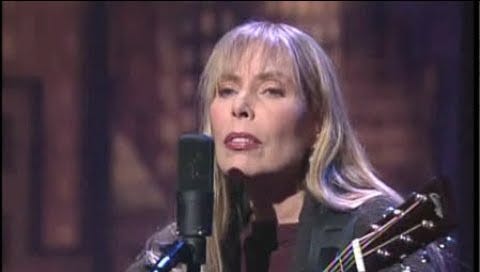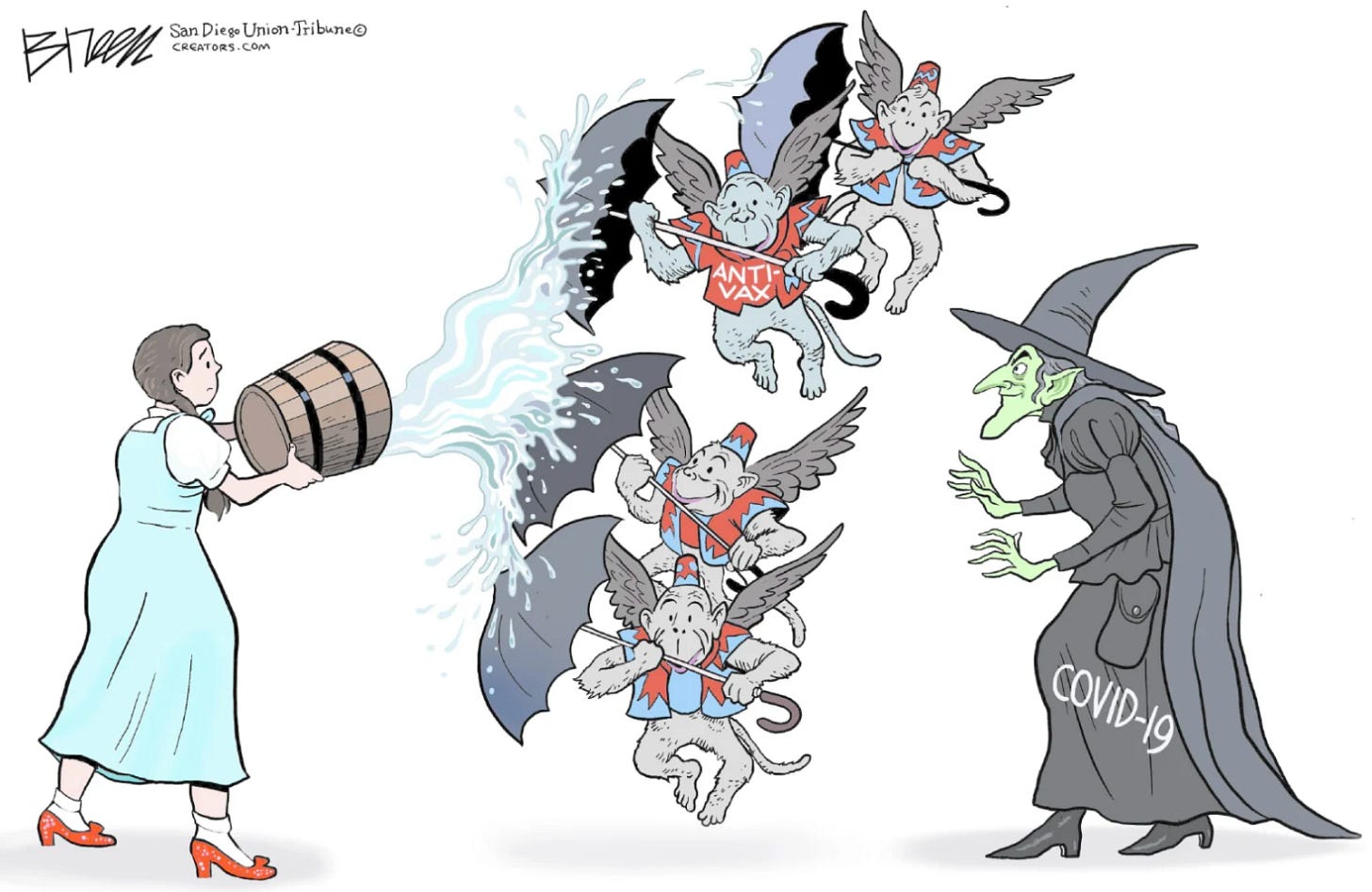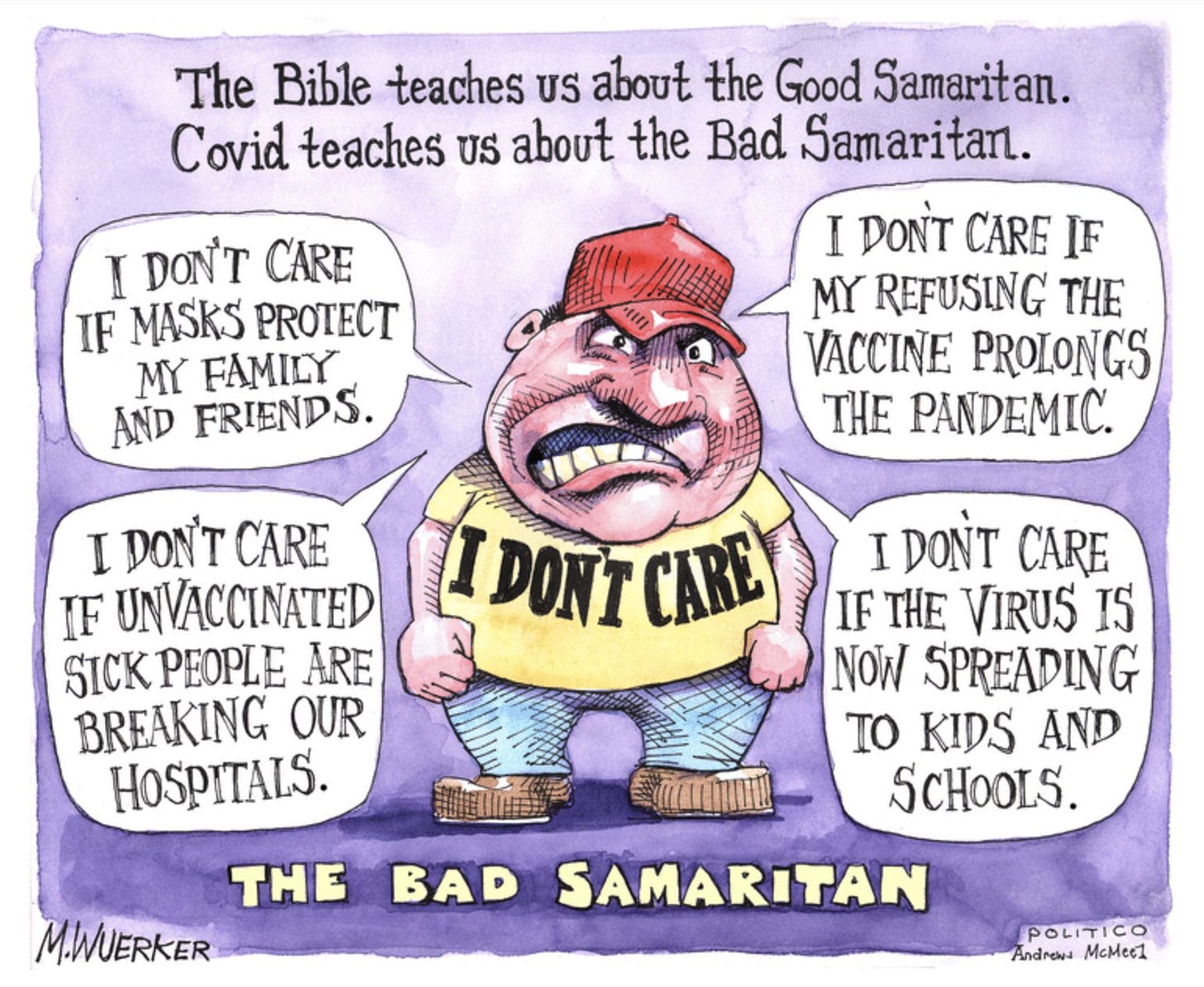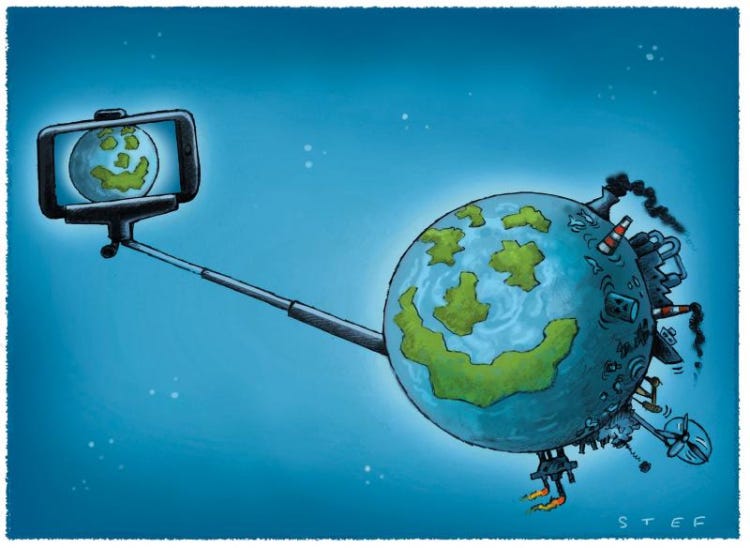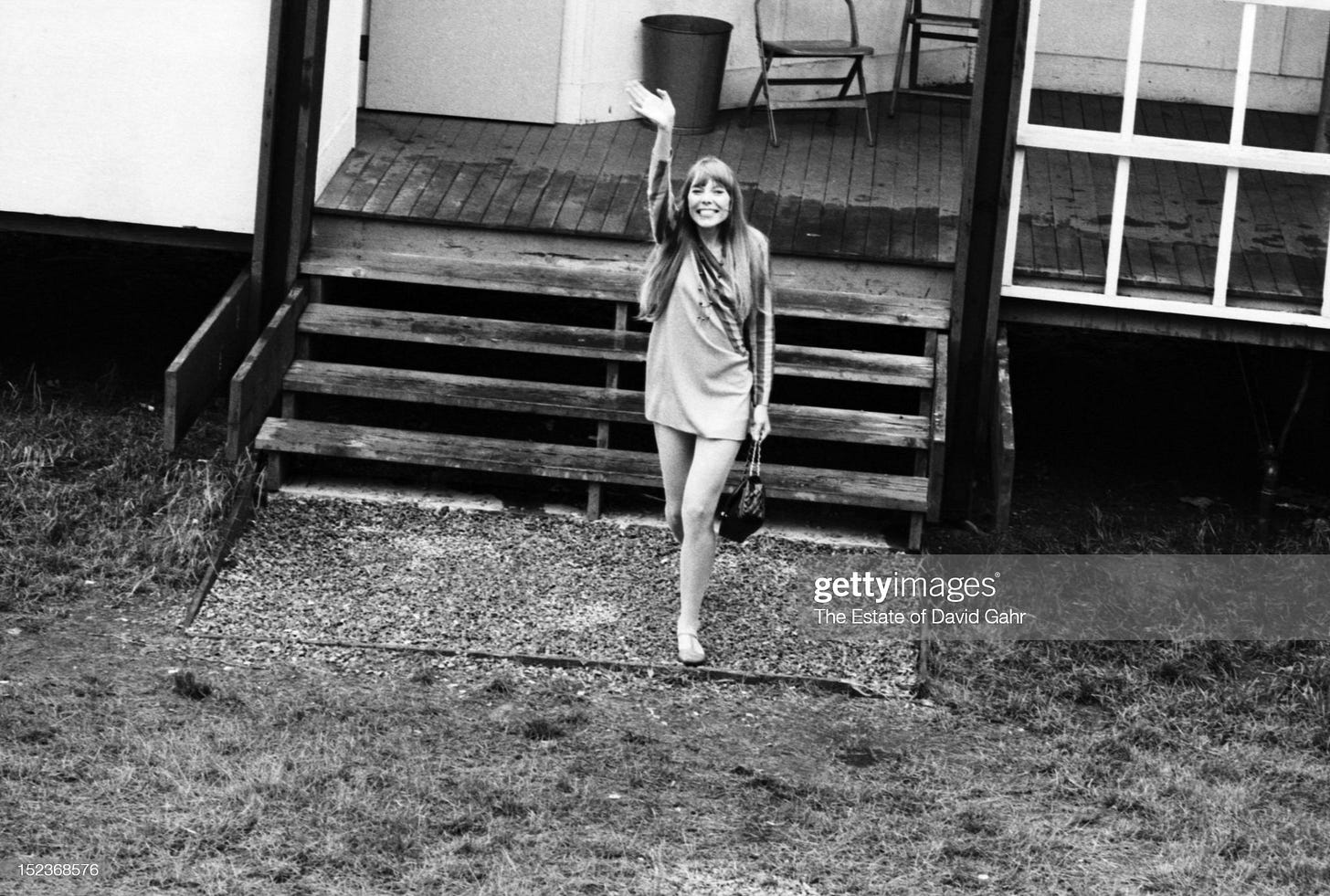Joni Mitchell: A Profile in Music, Redux
Another summer re-run, via 15 songs/videos and some bio.
Last week I noted that I would be taking an August break from new daily material, but I will post occasional repeats from last spring when many of you weren’t subscribing. So here’s the popular Joni profile, after the usual cartoons (these are new)—enjoy, and subscribe if you have not (it’s still free). And since today is Nagasaki day, one of my pieces on that war crime at The Daily Beast here. Read about my new award-winning film Atomic Cover-up here and watch trailer.
Joni Mitchell, 1966-1995
Born Roberta Joan Anderson in Alberta in 1943. The song below served as my intro to Joni in 1967 or 1968. Living in Niagara Falls, I would listen to a Toronto radio station on Sunday nights when they presented songs by Canadian folk artists (Gordon Lightfoot and etc.) Tom Rush, an established American, covered one of Joni’s best ever, “Urge for Going,” after Judy Collins passed. (Here she does it outdoors in 1966, as above but without the stampeding herd.) Joni never did put it on an album, deleting it later after it was set for Blue.
It was another cover that really launched her career big time, Judy Collins’ “Both Sides Now.” During this time Joni moved to NYC and lived for a spell at the Chelsea Hotel with a slightly older and also still-emerging fellow Canadian poet by the name of Leonard Cohen. Her song “Chelsea Morning” would result. (Leonard would pen a quite different, ahem, ode to the hotel involving Janis Joplin.) A record deal would follow, after David Crosby ushered her around, became her boyfriend, and produced what he would eventually admit was a so-so debut. Below Joni sings “Chelsea Morning” on the Dick Cavett special within hours of the end of the Woodstock Festival in 1969. It’s well known that while she would write the most famous song about the fest, “Woodstock,” she didn’t quite make it there herself.
Also from this period, another amazing cover, this time of a little known early Mitchell song, “I Don’t Know Where I Stand,” here by the great Sandy Denny and Fairport Convention:
Her second album, Clouds, included several of the songs already covered by others. Then her Ladies of the Canyon brought her an even wider audience, with “Big Yellow Taxi” and “Woodstock” (already a hit for C,S,N &Y). But for me the greatest song was “Rainy Night House,” her reflection on visiting with Leonard Cohen his family’s home in Montreal. Here’s the brand new 2021 re-master for her upcoming box set on the late-1960s/early-1970s.
The quality and audience for each album continued to grow, with the haunting and haunted Blue next up. “At that period of my life,” she would disclose, “I had no personal defenses. I felt like a cellophane wrapper on a pack of cigarettes. I felt like I had absolutely no secrets from the world and I couldn't pretend in my life to be strong." No one knew at the time that “Little Green” was about her own daughter (they were reunited years later). Her saddest and most beloved song might be “River” but here, introduced by Johnny Cash, let’s enjoy a more upbeat number from that album, “California.” She did love to play that dulcimer.
Another song, however, “A Case of You,” is cited by some as the greatest she has ever written. Debate continues over whether it is mainly about Leonard Cohen or James Taylor or some combination. Here’s the finest version of it, from one of her biggest fans, Diana Krall, alone at the piano.
She followed up that tremendous success with a kind of holding pattern, with her moody For the Roses album. It did contain the hit “Turn Me On I’m a Radio.”
Far from the best-known but in my view the strongest song on that album, “Judgment of the Moon and Stars,” was her ode to my man Beethoven—it’s genius musically and lyrically (and I know a lot about Ludwig myself, having produced a book and a film).
In 1974, Joni’s Court and Spark became her biggest seller ever, driven by raves and hit singles, such as “Raised on Robbery.” She had decided to leave her “folkish” days behind in favor of a more rock-tinged-with-jazz backing from Tom Scott and the L.A. Express, which allowed her to have more fun in concert as well. But she could still do the melodic love-crossed thing as well, as below in her bestselling single so far, “Help Me.”
In the fall of 1975, Joni belatedly joined Bob Dylan’s Rolling Thunder Revue, and was naturally given her own solo spot (which I caught at two shows). One song she offered was a new one, “Coyote,” which was said to be about then-boyfriend Sam Shepard, who also was on the tour (and wrote a fairly weak book about it). In the video below, the highlight of the disappointing recent Scorcese film about the tour, she kind of blows away Dylan and Roger McGuinn with “Coyote” at Gordon Lightfoot’s house in Toronto (Gordo is lurking in the back).
Just before and after this, Joni plunged even deeper into jazz colorings, with mixed results on her Hissing of Summer Lawns and Hejira albums. “Don’t Interrupt the Sorrow” on the first was a standout. If the slight drop in sales bothered her, she never showed it. She then went even further in a collaboration with jazz great Charles Mingus and other ventures. But she also popped up at The Last Waltz in 1976 for The Band, with “Coyote” featured in that film. But here, below, seen by few, is the less-known song she did that day, “Shadows and Light”—not in the film, but captured here by Scorcese’s black and white cameras on the floor…
Her song “Amelia” from the Hejira album was one of her best ever (which is saying a lot), here performed a few years later in scintillating fashion and with her long-underrated guitar playing and tunings. Closing with a Pat Metheny solo. Don’t miss.
Let’s close with two late-career highlights, “The Magdalene Laundries” and “Sex Kills,” below, from her “comeback” 1994 album Turbulent Indigo, which won two Grammys.
Greg Mitchell is the author of a dozen books, including the bestseller The Tunnels (on escapes under the Berlin Wall), the current The Beginning or the End (on MGM’s wild atomic bomb movie), and The Campaign of the Century (on Upton Sinclair’s left-wing race for governor of California), which was recently picked by the Wall St. Journal as one of five greatest books ever about an election. For nearly all of the 1970s he was the #2 editor at the legendary Crawdaddy. Later he served as longtime editor of Editor & Publisher magazine. He recently co-produced a film about Beethoven’s Ninth Symphony.

